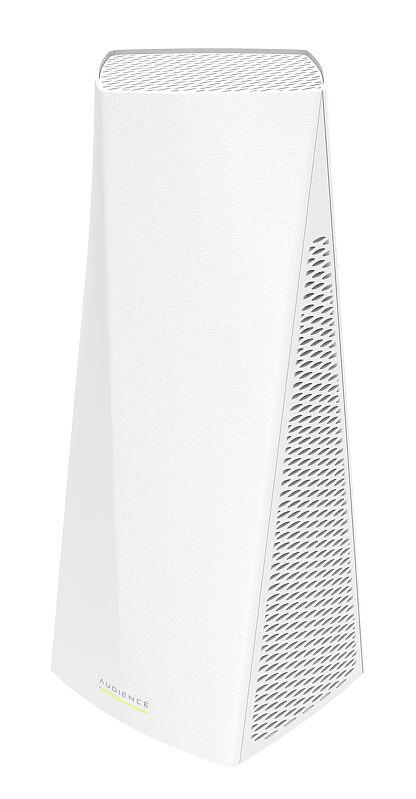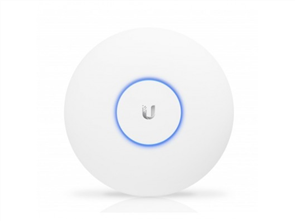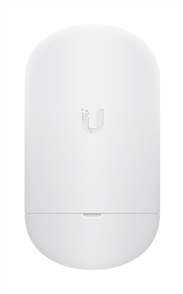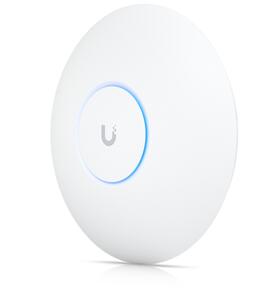 MikroTik RBD25GR-5HPACQD2HPND_R11E-LTE6 Audience LTE6 Kit, Tri-Band Wi-Fi Mesh Access Point with LTE6
MikroTik RBD25GR-5HPACQD2HPND_R11E-LTE6 Audience LTE6 Kit, Tri-Band Wi-Fi Mesh Access Point with LTE6
Audience LTE6 kit
- Tri-band (one 2.4 GHz & two 5 GHz) home access point with LTE CAT6 support and meshing technology
Wi-Fi has to be fast, reliable, easy to manage, it must reach every room and every corner. That is exactly what Audience devices can deliver in grand style – even in the biggest houses!
Audience LTE6 kit is a tri-band (one 2.4 GHz & two 5 GHz ) home access point with LTE support and meshing technology. If you need Wi-Fi in a huge building with all kinds of obstacles, simply add more Audience devices to your network – with a press of a button they will sync seamlessly and create a single Wi-Fi network to cover the whole premises. The initial setup is also very simple – download the iOS or Android MikroTik app, it will connect to the router and guide you through a quick setup process.
In some cases a single Audience unit might be able to replace several other routers – in our tests it covered 1858 m² (20000 square feet) easily. It depends on the amount of obstacles, Wi-Fi clients and interference, so results may vary.
Cables can no longer limit you. CAT6 LTE delivers speed up to 300 Mbps with low latency, so having a traditional Ethernet connection is not a must-have for streaming high quality videos or gaming. Alternatively, you can use the two Gigabit Ethernet ports and keep the LTE option for backup. One of the Ethernet ports supports PoE for powering the device.
Dual-chain 2.4 GHz and 5 GHz wireless coverage will solve most interference issues in a crowded environment. For example, you can simultaneously use the 2.4 GHz channel for all your household mobile devices and reserve the 5 GHz channel for your PC or TV.
Order your Audience today and start living in the future. The future of easy and elegant networking.
Use CAPsMan to allow centralisation of wireless network management.
You can use the Mikrotik capsman to manage multiple access points and enable roaming between them. This will ensure that users can roam from one access point to the other without loosing connections. Capsman stands for controlled access point system manager. It allows network administrators to manage multiple Mikrotik access point from a central location.
• Centralised management of RouterOS Access Point
• Dual Band AP Support
• Provisioning of APs
• MAC and IP Layer communication with APs
• Certificate support for AP communication
• Full and Local data forwarding mode
• RADIUS MAC authentication
• Custom configuration support
• Automatic upgrade of all CAP clients
• L2 Path MTU discovery
Hardware Specifications
|
Product code |
RBD25GR-5HPacQD2HPnD&R11e-LTE6 |
|
Architecture |
ARM 32bit |
|
CPU |
IPQ-4019 |
|
CPU core count |
4 |
|
CPU nominal frequency |
716 MHz |
|
IPsec hardware acceleration |
Yes |
|
Dimensions |
100 x 235 x 97 mm |
|
RouterOS license |
4 |
|
Size of RAM |
256 MB |
|
Storage size |
128 MB |
|
Storage type |
NAND |
|
MTBF |
Approximately 200'000 hours at 25C |
|
Tested ambient temperature |
-30°C to 60°C |
Powering
|
PoE in |
Passive PoE |
|
PoE in input Voltage |
24-57 V |
|
Number of DC inputs |
2 (DC jack, PoE-IN) |
|
DC jack input Voltage |
12-57 V |
|
Max power consumption |
30 W |
|
Max power consumption without attachments |
20 W |
|
FAN count |
Passive |
Mobile
|
2G Category |
Class12 |
|
2G bands |
2 (1900MHz) / 3 (1800MHz) / 5 (850MHz) / 8 (900MHz) |
|
3G Category |
R7 (21Mbps Downlinks, 5.76Mbps Uplink) / R8 (42.2Mbps Downlink, 5.76Mbps Uplink) |
|
3G bands |
1 (2100MHz) / 2 (1900MHz) / 5 (850MHz) / 8 (900MHz) |
|
LTE Category |
6 (300Mbit/s Downlink, 50Mbit/s Uplink) |
|
LTE FDD bands |
1 (2100MHz) / 2 (1900MHz) / 3 (1800MHz) / 7 (2600MHz) / 8 (900 MHz) / 20 (800MHz) / 5 (850MHz) / 12 (700MHz) / 17 (700MHz) / 25 (1900MHz) / 26 (850MHz) |
|
LTE TDD bands |
38 (2600MHz) / 40 (2300MHz) / 39 (1900MHz) / 41n (2500MHz) |
Wireless specifications
|
Wireless 2.4 GHz Max data rate |
300 Mbit/s |
|
Wireless 2.4 GHz number of chains |
2 |
|
Wireless 2.4 GHz standards |
802.11b/g/n |
|
Antenna gain dBi for 2.4 GHz |
3.5 |
|
Wireless 2.4 GHz chip model |
IPQ-4019 |
|
Wireless 2.4 GHz generation |
Wi-Fi 4 |
|
|
|
|
Wireless 5 GHz Max data rate |
867 Mbit/s |
|
Wireless 5 GHz number of chains |
2 |
|
Wireless 5 GHz standards |
802.11a/n/ac |
|
Antenna gain dBi for 5 GHz |
4.5 |
|
Wireless 5 GHz chip model |
IPQ-4019 |
|
Wireless 5 GHz generation |
Wi-Fi 5 |
|
|
|
|
Wireless 5 GHz Max data rate |
1733 Mbit/s |
|
Wireless 5 GHz number of chains |
4 |
|
Wireless 5 GHz standards |
802.11a/n/ac |
|
Antenna gain dBi for 5 GHz |
4.5 |
|
Wireless 5 GHz chip model |
QCA9984 |
|
Wireless 5 GHz generation |
Wi-Fi 5 |
Ethernet
|
10/100/1000 Ethernet ports |
2 |
Peripherals
|
Number of SIM slots |
1 Modem (Micro SIM) |
|
MiniPCI-e slots |
1 |
AKA RBD25GR-5HPacQD2HPnD&R11e-LTE6
Specifications
|
Product code |
RBD25GR-5HPacQD2HPnD&R11e-LTE6 |
|
Architecture |
ARM 32bit |
|
CPU |
IPQ-4019 |
|
CPU core count |
4 |
|
CPU nominal frequency |
716 MHz |
|
IPsec hardware acceleration |
Yes |
|
Dimensions |
100 x 235 x 97 mm |
|
RouterOS license |
4 |
|
Size of RAM |
256 MB |
|
Storage size |
128 MB |
|
Storage type |
NAND |
|
MTBF |
Approximately 200'000 hours at 25C |
|
Tested ambient temperature |
-30°C to 60°C |
Powering
|
PoE in |
Passive PoE |
|
PoE in input Voltage |
24-57 V |
|
Number of DC inputs |
2 (DC jack, PoE-IN) |
|
DC jack input Voltage |
12-57 V |
|
Max power consumption |
30 W |
|
Max power consumption without attachments |
20 W |
|
FAN count |
Passive |
Mobile
|
2G Category |
Class12 |
|
2G bands |
2 (1900MHz) / 3 (1800MHz) / 5 (850MHz) / 8 (900MHz) |
|
3G Category |
R7 (21Mbps Downlinks, 5.76Mbps Uplink) / R8 (42.2Mbps Downlink, 5.76Mbps Uplink) |
|
3G bands |
1 (2100MHz) / 2 (1900MHz) / 5 (850MHz) / 8 (900MHz) |
|
LTE Category |
6 (300Mbit/s Downlink, 50Mbit/s Uplink) |
|
LTE FDD bands |
1 (2100MHz) / 2 (1900MHz) / 3 (1800MHz) / 7 (2600MHz) / 8 (900 MHz) / 20 (800MHz) / 5 (850MHz) / 12 (700MHz) / 17 (700MHz) / 25 (1900MHz) / 26 (850MHz) |
|
LTE TDD bands |
38 (2600MHz) / 40 (2300MHz) / 39 (1900MHz) / 41n (2500MHz) |
Wireless specifications
|
Wireless 2.4 GHz Max data rate |
300 Mbit/s |
|
Wireless 2.4 GHz number of chains |
2 |
|
Wireless 2.4 GHz standards |
802.11b/g/n |
|
Antenna gain dBi for 2.4 GHz |
3.5 |
|
Wireless 2.4 GHz chip model |
IPQ-4019 |
|
Wireless 2.4 GHz generation |
Wi-Fi 4 |
|
|
|
|
Wireless 5 GHz Max data rate |
867 Mbit/s |
|
Wireless 5 GHz number of chains |
2 |
|
Wireless 5 GHz standards |
802.11a/n/ac |
|
Antenna gain dBi for 5 GHz |
4.5 |
|
Wireless 5 GHz chip model |
IPQ-4019 |
|
Wireless 5 GHz generation |
Wi-Fi 5 |
|
|
|
|
Wireless 5 GHz Max data rate |
1733 Mbit/s |
|
Wireless 5 GHz number of chains |
4 |
|
Wireless 5 GHz standards |
802.11a/n/ac |
|
Antenna gain dBi for 5 GHz |
4.5 |
|
Wireless 5 GHz chip model |
QCA9984 |
|
Wireless 5 GHz generation |
Wi-Fi 5 |
Ethernet
|
10/100/1000 Ethernet ports |
2 |
Peripherals
|
Number of SIM slots |
1 Modem (Micro SIM) |
|
MiniPCI-e slots |
1 |






